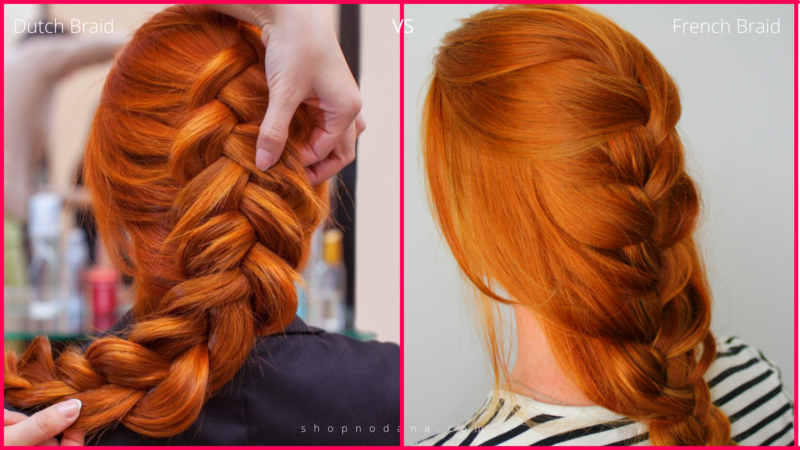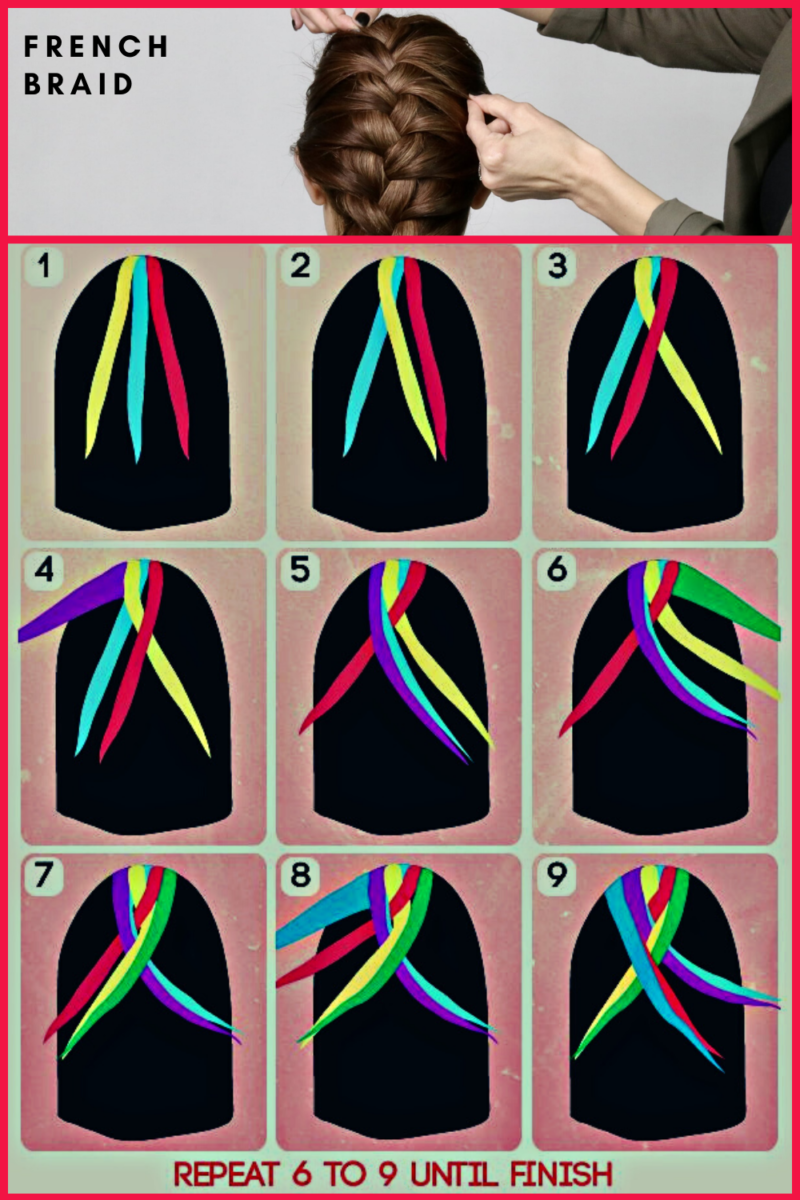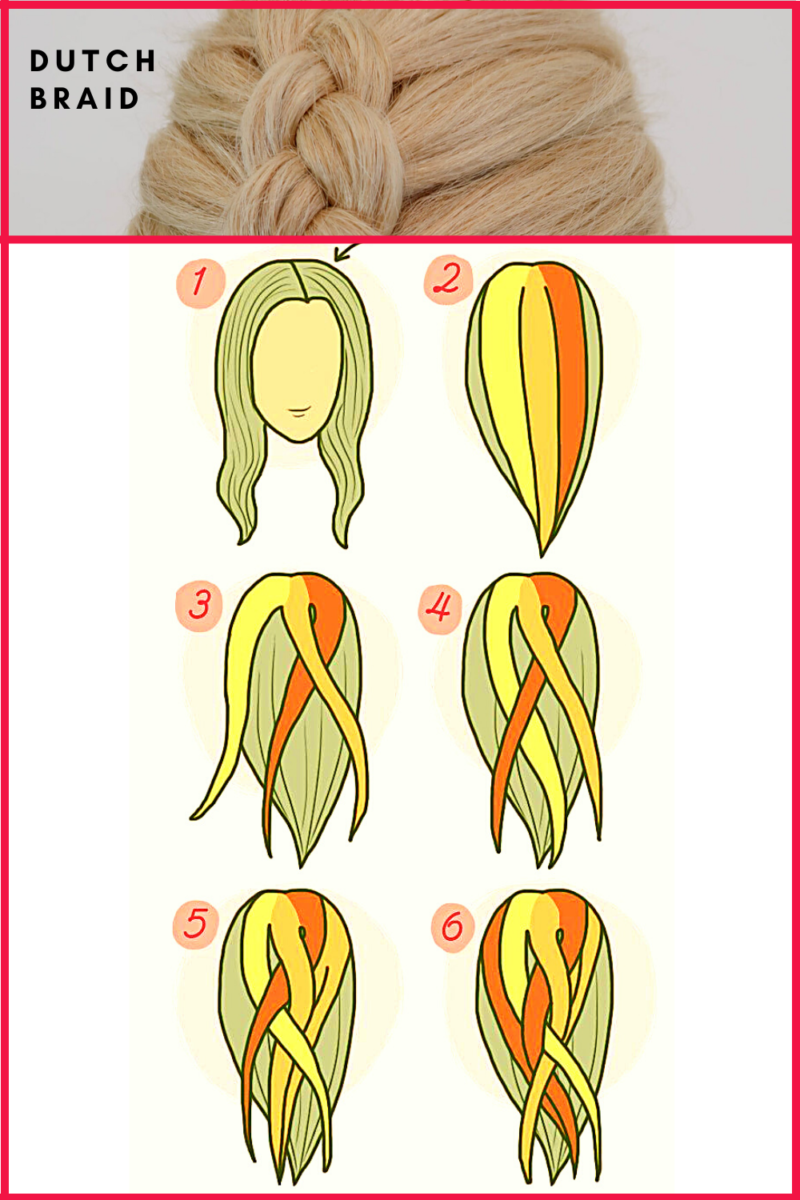Dutch Braid vs. French Braid- What is the Main Difference?
Dutch Braid vs. French Braid- which one do you like best? I don’t know where to start, so I’ll start at the beginning. And in my case, the beginning, i.e. the basis for most hairstyles, is a braid in various versions.
Braids are not just for school girls, they are the perfect way to make your look more fashionable. Whether you like your braids neat and tidy or messy and boho, try these two different styles and make them your own.
Recently, the Dutch braid has started to grow in popularity, causing some confusion as a result: Are these two braid styles the same? If not, what’s the difference really?
Let’s get into it! Keep reading below to learn more about French braids, and Dutch braids, and the difference between the two braiding techniques.
Dutch Braid vs. French Braid- What’s the difference?
Do you love braided hairstyles like us? Many girls mix up the two popular types of braids
There are many types of braids that girls practice and love to make for different occasions. Some braids have a formal texture and are suitable for formal occasions while others are more suitable for daily routines.

The main difference between the braid intersects with the pieces above the middle section while the Dutch braid crosses the pieces below the middle section.
Both are very easy hairstyles for beginners once you get comfortable with the braiding movement and learn how to keep teaching the sections. The basic tip for becoming a braiding expert is simple: Practice! The more you braid, the faster and more natural it feels.
People often confuse the two. So, we have put together this guide.
Below is a simple, easy-to-read comparison table that helps you understand the key differences.
French Braid |
Dutch Braid |
|
|
The Similarities
Both are popular and preferred by girls. Although there are many similarities and differences as well, they give a distinct look when finished.
Both braids can be worn in a variety of ways that suit both formal and informal occasions. You can do these braids during school time, for bridal showers as well as for weddings.
Various hair embellishments such as flowers or pins with gemstones can be added to these braids to give the braid an elegant and beautiful look.
What is the French Braid?
They look like regular braids but are flat on your head rather than coming from a ponytail.
The timeless braid can be worked as either a single braid or two braids. This type of braid is different from a regular braid because it involves weaving small sections of hair into the three strands while braiding, making the braid appear to hang down the back of the head.
The end result should include all the hair and be tight against the scalp. The end is usually secured with a ponytail holder when about two inches of hair is left, however, how much hair you leave completely free is a matter of personal preference!
The Greeks and Africans are often credited with being the first to use this design technique. The earliest evidence is from the Tassili N’Ajjer mountain range in Algeria, where rock art from nearly 6000 years ago depicts women wearing this style of braids.
The hairstyle was then seen in Greek art, especially on statues of Kouros. While we may never know who wore it first, one thing we do know is true that the French didn’t make this timeless braid
How to make French Braid?
The first step
Start by brushing your hair or using a smoothing cream.
The second step
Section a triangle of hair from your forehead to the crown of your head.
The crown of your head is the highest point on your scalp towards the back of your head.
Think of it as the area where men usually start to go bald!
The third step
Just as you did with the regular braid, divide the section into three pieces and start using the regular braid method.
The fourth step
As you go down the head, you need to incorporate more hair from each side of your hair into the braid.
Do this every time you cross your hair.
Fifth step
Keep doing this until you reach the bottom of the braid, and tie it with a hair tie.
Tips
For a neater look, try to keep it consistent with the amount of hair you add to the braid each time you start the style over. Then again, a rugged, woven French braid can be very elegant. Tie the end off with a nice ribbon or hair tie, and you’re done!
French Braid Tutorial
What is the Dutch Braid?
“The Dutch braid is a three-piece section of hair braided with the cross pieces down the middle section, from the crown of the head to the nape of the neck,” Boswell says.
The braid will look less like a cascading braid and more like a single braid floating over the hair with sections of hair neatly tucked underneath. Think of the Dutch braid as an inverted or reversed French braid. By bringing the left and right strands under the centerpiece, you’ll create a single braid that pops.
Much like the French braid, this hairstyle can also work as a single braid or double braid. Double Dutch braids are sometimes referred to as “boxer braids.”
How to Make Dutch Braids
Once you’ve mastered your French braid, it’s time to try Dutch braids.
The Dutch braid is actually very similar to the French braid hairstyle, with the slight tweaking that you cross the side sections of the hair down the middle strand each time rather than over it.
It creates a more 3D effect, with the braid displayed on top of the style. For this reason, it is often referred to as an “inside-out braid” or “inverted French braid.” Just like the French braid, you’ll start near the crown of the head, and you’ll also add more hair to each strand before crossing the middle each time.
The first step
All you do is an inverted French braid.
Instead of braiding strands on top of each other, you can feed them underneath.
Follow the first two steps of the French braid.
The second step
Cross your sections under each other, pulling from the inside out.
The third step
Once you reach the bottom, secure it with a hair tie.
Dutch Braid Tutorial
In case you were wondering, not only are the Dutch braid and the French braid confused, but also cornrows. But the main difference between cornrows and Dutch braid has to do with the weaving technique.
With Dutch braids, you can cross your strands down while holding the hair at an angle to create height. However, with the corn strands – which also pass underneath – the braiding is done more tightly.
The end result is a different look, a slightly flat appearance on the scalp, due to the fact that each section of hair is braided into the middle of each braid.
The Final Thought
In conclusion, both braids are a super fun way to switch up your hair any day. Once you add it to your skillset, the ponytail will only look like the start. Make it one braid, two pigtails, or a braided bun. The options are endless! Just remember: choose more or less. Not both!
Read also
10 Best Pink Cowboy Boots for Women
Hair loss causes and how to stop hair loss naturally
Ancient Indian Hair Growth Secrets
Summer Hair Care Tips- How to Care for Dry and Falling hair
Best Hair Masks for Dry and Dull Hair


